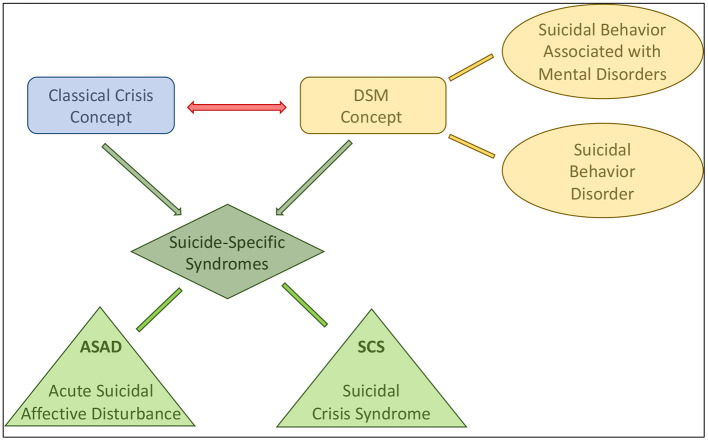Figure 1.
Concept and development of the newly described suicide-specific syndromes [acute suicidal affective disturbance (ASAD) and suicidal crisis syndrome (SCS)]. The DSM-5 involves suicidal behavior disorder in its Appendix. Suicidal behavior may also be associated with different mental disorders, such as major depressive disorder, borderline personality disorder, etc. In contrast, the classical crisis theory, as a transdiagnostic concept, focuses on the emotional and psychological aspects of suicidal behavior, regardless of their potential association with mental disorders. Suicide-specific syndromes integrate these two major concepts with establishing well-defined diagnostic criteria, but also consider the acute psychological and psychopathological changes during the pre-suicidal period. Two different forms of suicide-specific syndromes were described recently, the ASAD and the SCS.

